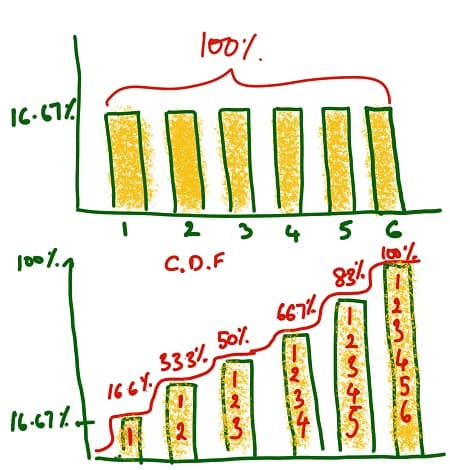
We could have heads or tails as possible outcomes. In the following sections these categories will be briefly discussed and examples will be given.Ĭonsider our coin toss again. As such there are three sorts of random variables: discrete, continuous and mixed. A random variable is simply a function that relates each possible physical outcome of a system to some unique, real number. In order to cope with this reality and to be able to describe the future states of a system in some useful way, we use random variables. Some outcomes truly are up in the air, unsettled until they are part of the past. Furthermore, it seems on exceedingly small scales that strict determinists are absolutely wrong there is no way to predict when, for example, a uranium atom will split, and if such an event affects the larger world then that macro event is truly unpredictable. If we knew all that, then we would know that particular coin toss had a 100% chance of landing the way it will land, and zero chance of any other outcome.īut we, of course, are often lacking even a mentionable fraction of such knowledge of the world. If we only knew the forces applied at a coin's toss, its exact distribution of mass, the various minute movements of air in the room. To a strict determinist, all such bets were settled long before any coin, metaphorical or not, was ever minted we simply do not yet know it. We care greatly to know what our chances are that we will get whirring turbines instead of a meltdown. Our coins may be, for example, various possible coolant flow rates or masses of uranium in a nuclear power plant. Heads or tails may even be a matter of life or death. But for others we have no choice but to hold judgment and speak in more vague terms, if we wish to say anything useful about the future at all.Īs scientists, it is, of course, our job to say something useful (or at the very least, authoritative.), while the metaphorical coins of important physical system are still in the air. Will it land heads up? Tails? More than that, how long will it remain in the air? How many times will it bounce? How far from where it first hits the ground will it finally come to rest? For that matter, will it ever hit the ground? Ever come to rest?įor some such questions, we can and do settle on answers long before observations we are pretty sure gravity will hold and the coin will land. While it flips through space, what could you possibly say about its future?

Say you were to take a coin from your pocket and toss it into the air. Cumulative Distribution Functions (CDF).With enough IID draws (and certain regularity conditions are satisfied), the empirical CDF would converge on the underlying CDF of the population."I, at any rate, am convinced that He does not throw dice." Let $X$ be a random variable denoting the result of a single coin flip where $X=1$ denotes heads and $X=0$ denotes tails. For the empirical CDF, you use the probability measure defined by the frequency counts in an empirical sample. The distinction is which probability measure is used.

An empirical cumulative distribution function function $G(x)$ gives $P(X \leq x)$ based on the observations in your sample.The cumulative distribution function $F(x)$ gives the $P(X \leq x)$.


 0 kommentar(er)
0 kommentar(er)
